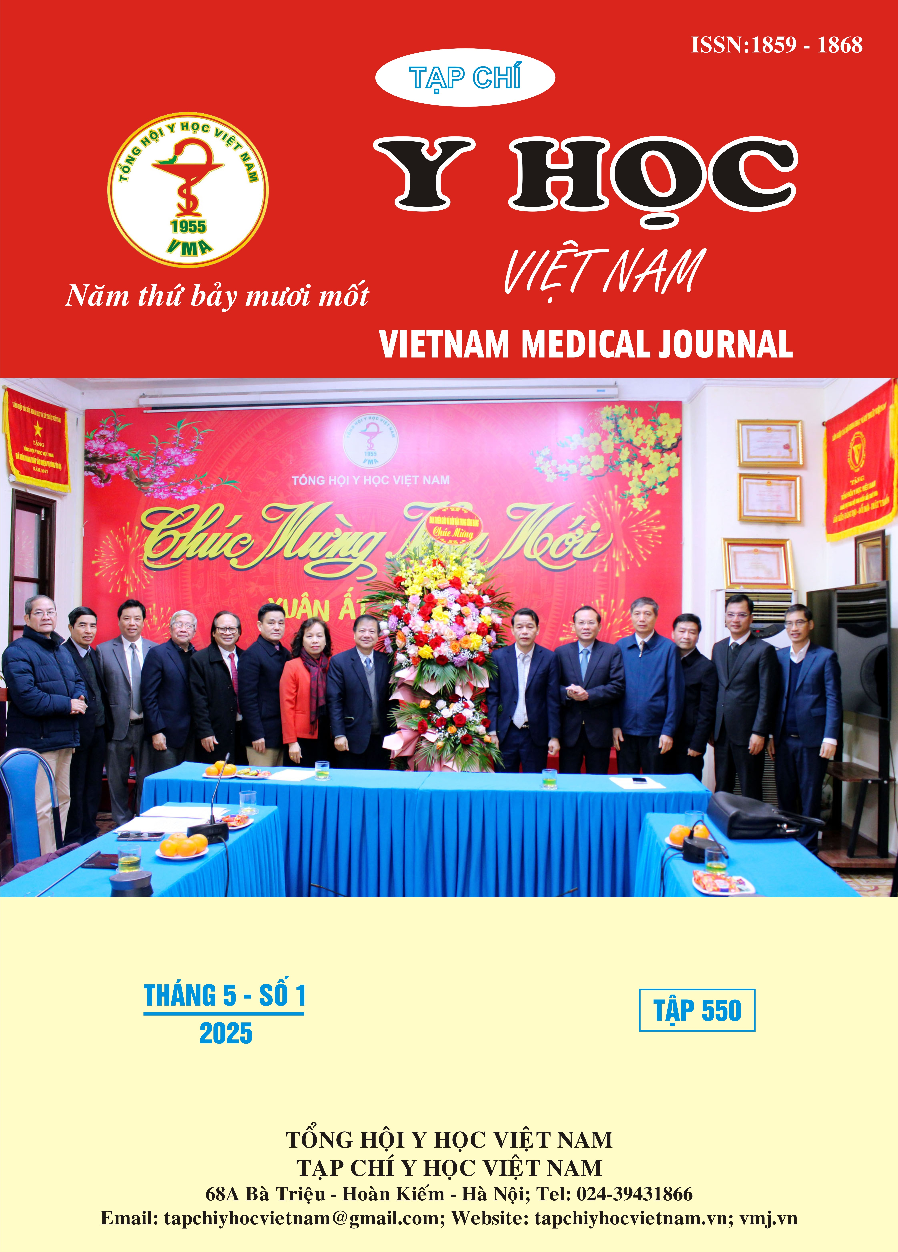EVALUATION OF SOME FACTORS AFFECTING THE QUALITY OF TISSUE SECTION STAIN BY PERIODIC ACID SCHIFF (PAS) TECHNIQUE IN PATHOLOGYABSTRACT
Main Article Content
Abstract
Background: The Periodic Acid Schiff (PAS) staining technique is widely employed in histopathology to identify polysaccharide-rich structures such as glycogen, mucopolysaccharides, and glycoproteins. The quality of PAS-stained tissue sections is influenced by factors including tissue preparation, section thickness, reagent quality and concentration, and staining duration. Objectives: To evaluate specific factors (tissue type, reaction temperature, reagent concentration, and staining duration) influencing PAS staining quality and propose an optimized staining protocol based on experimental findings. Subjects and research methods: A cross-sectional descriptive study was conducted. Five tissue types—liver, lung, esophagus, stomach, and colon—were examined, with six samples from each type. Each tissue sample was sectioned into nine slides for PAS staining to assess the impact of these factors on staining quality. Results: PAS staining under varying conditions demonstrated significant effects on staining quality. For tissue type, all samples achieved acceptable or good quality: colon (4 good, 2 acceptable), stomach (3 good, 3 acceptable), liver (2 good, 4 acceptable), and lung and esophagus (6 acceptable each). Varying the exposure time to periodic acid and Schiff reagent significantly impacted PAS staining quality (p < 0.05). Most slides were acceptable (70%) or good (30%) when periodic acid differentiation lasted 7 minutes. When this time extended to 40 minutes, 20% of slides failed to meet quality standards. Similarly, 70% of slides were acceptable, and 30% were good when Schiff reagent was applied until tissues turned pink. However, 66.7% of slides failed quality standards when Schiff reagent application lasted 40 minutes. No significant differences in staining quality were observed between 0.5% and 1.0% periodic acid concentrations. Conclusions: Factors such as tissue type, reaction temperature, periodic acid differentiation time, and Schiff reagent application time significantly influenced PAS staining outcomes. The highest quality slides were obtained from colon, stomach, liver, and esophagus tissues. Optimal PAS staining quality was achieved at 25°C, with 7 minutes of differentiation using 0.5% periodic acid, and Schiff reagent application until tissues turned pink (not exceeding 30 minutes).
Article Details
Keywords
Periodic Acid Schiff, Glycogen, Mucin
References
2. Monika Vyas, Zuckerman JE, Andeen NK. PAS (Periodic acid-Schiff). PathologyOutlines.com.
3. Nguyễn Văn Hưng. Giải Phẫu Bệnh vi Thể Lâm Sàng. Nhà xuất bản Y học; 2010.
4. Zakout YMA, Salih MM, Ahmed HG. The effect of fixatives and temperature on the quality of glycogen demonstration. Biotech Histochem. 2010;85(2): 93-98. doi:10.3109/ 10520290903126883
5. Afifi AK, Shanklin WM, Azzam NA. Application of the Periodic Acid-Schiff Procedure to Tissue Blocks. Stain Technol. Published online January 1, 1960. doi:10.3109/10520296009114755


